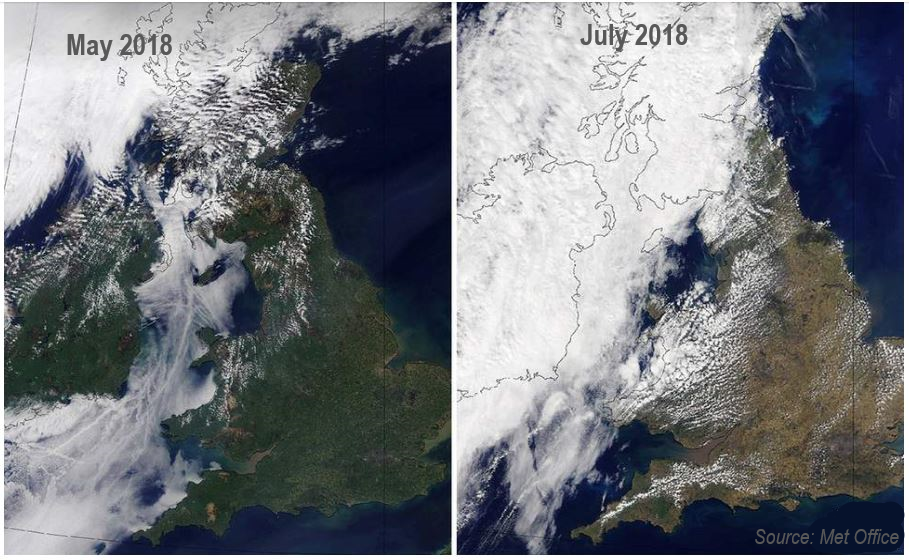How the drought affects cattle feed usage
Friday, 3 August 2018
Weather conditions this year have been varied to say the least. During winter, tough conditions challenged farmers everywhere with cold and wet weather. As spring approached, many producers experienced snow throughout February and into March. The prolonged cold and wet weather meant turnout was delayed for many, by four to six weeks. We are now at the other extreme this summer with record breaking hot and dry weather in May, June and July. These extreme weather events have placed significant pressure on feed stocks; later turnout meant cattle were fed inside longer in the winter, and the hot and dry weather is resulting in producers going into feed stocks, most of which were set aside for next winter.

Looking back through the years, there hasn’t been many years with weather that has been a combination of a wet winter followed by an exceptionally hot and dry summer. Looking at data from the Met Office, 2013 had a hot and dry summer period however it was much briefer than the one being experienced this year. 1995 arguably had more similar weather patterns to this year, with hot and dry weather from April to July and in August temperatures then soared to record levels. This put significant pressure on the ground and pasture performance. In the current year, grass growth levels have dropped significantly compared to the average growth rate for the time of year. The lack of available fodder has pushed hay prices up, and the uncertainty around the ongoing harvest has pushed straw prices up to record levels.

It is evident from GB feed production data that during years when there were similar weather patterns to 2018, animal feed production was noticeably higher than the neighbouring years, based on feed produced per live bovine animal. From July 1995 to June 1996, the 12 months in which animal feed data is collected, GB feed production was 12% higher than in the previous year. A large amount of the extra feed was utilised over the winter months, most likely as a consequence of lower forage levels that meant producers were having to supplement cattle diets with concentrates. A proportion of this would have been from dairy farmers supporting milk yields however beef farmers, particularly finishers, will have contributed to the rise too, in concentrate usage in order to finish animals to the appropriate specification. The effects of the current weather may not be felt, at least financially, until the winter months when forage stocks begin to run low and supplementary feeding is required.

Looking at more recent changes in feed production, the long winter and wet spring has led to a 6% (+112,000 tonnes) increase in total cattle and calf feed production in the first half of 2018 as producers stretched any available forage stocks. Farmers have therefore already faced increased financial costs this year and the current drought is adding complexity to on-farm decisions.

Going forward, planning a winter feed budget, both for feeding requirements and the cost of ration will be paramount to help control costs. Budgeting will also help pre-empt any potential shortfalls in feed stocks and enable decisions to be made about purchasing feed for the winter. Producers may also be considering what stock they want to retain going into the housing period. Identifying the more unproductive animals on farm that could be sold earlier than would be typical can reduce the burdens on feed stocks. If feed stocks do become tight, producers are going to be faced with some hard decisions. AHDB has set up a drought hub with the latest guidance and tools to assist producers to manage the effects of heat stress and drought.
Useful links:
Beef ration calculator – composition and cost of beef rations
Beef and lamb management tools – various tools to assist with improving business performance
Topics:
Sectors:
Tags:

